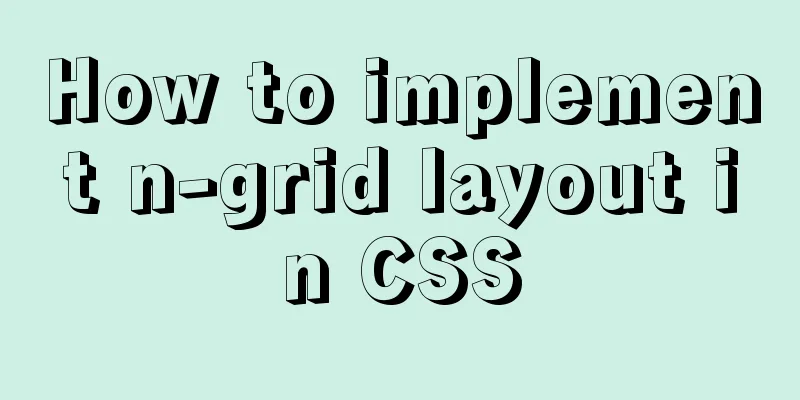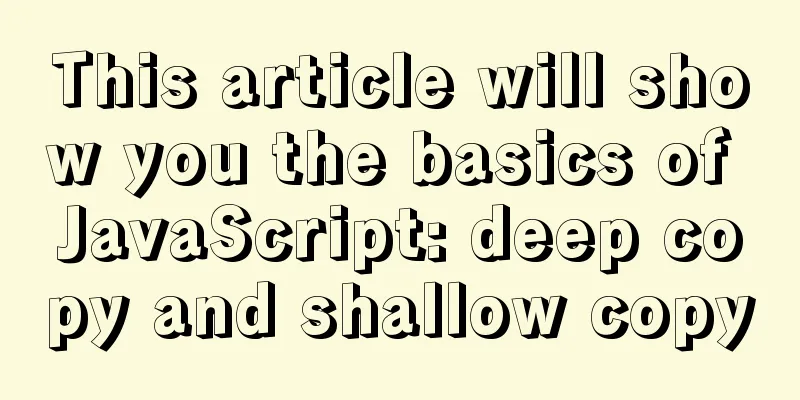How to implement n-grid layout in CSS

|
Common application scenarios The interfaces of current APPs are basically the same, and the grid layout has become a necessity for every APP. With border, often used in "Function Navigation" page
Borderless, commonly used in home page categories
Design goals In the scss environment, n-grids are implemented through mixin, and can support "with or without borders" and "whether each grid is square": @include grid(3, 3, true); // 3 x 3, with borders, and each grid is a square @include grid(2, 5, false, false); // 2 x 5, without borders Final result
"Padding Percentage" Tips First, let me explain a little trick, how to achieve a square. I guarantee you will understand it after reading it once. The conclusion is:
Design ideas (regardless of whether you are scss or less)
So our html looks like this:
<!-- a-grid is a flex container, which makes it easy to "center horizontally/vertically" its content -->
<div class="a-grid">
<!-- a-grid__item is used to take up space to realize the square -->
<div class="a-grid__item">
<!-- item__content is the actual container for the content-->
<div class="item__content">
content...
</div>
</div>
</div>
Code (scss) Three things are done here:
.a-grid {
display: flex;
flex-wrap: wrap;
width: 100%;
.a-grid__item {
text-align:center;
position:relative;
>.item__content {
display:flex
flex-flow: column;
align-items: center;
justify-content: center;
}
}
}
@mixin grid($row:3, $column:3, $hasBorder:false, $isSquare:true) {
@extend .a-grid;
.a-grid__item {
flex-basis: 100%/$column;
@if($isSquare) {
padding-bottom: 100%/$column;
height: 0;
}
>.item__content {
@if($isSquare) {
position:absolute;
top:0;left:0;right:0;bottom:0;
}
}
}
@for $index from 1 to (($row - 1) * $column + 1) {
.a-grid__item:nth-child(#{$index}) {
@if($hasBorder) {
border-bottom: 1px solid #eee;
}
}
}
@for $index from 1 to $column {
.a-grid__item:nth-child(#{$column}n + #{$index}) {
@if($hasBorder) {
border-right: 1px solid #eee;
}
}
}
}
use
// Generate a 3-row, 3-column, square grid. a-grid-3-3 {
@include grid(3, 3, true);
}
// Generate a 2-row, 5-column, borderless grid, where the height of each grid is determined by the content. a-grid-2-5 {
@include grid(2, 5, false, false);
}
Reminder: If you want to make a nxm layout, don't forget to add nxm corresponding DOM structures in HTML after using @include grid(n, m). final The content is very simple, and there are still many areas that can be optimized, such as the border can be changed to a "hairline" border, which looks thinner on the real device. Well, that's all for now. If you have a better way to implement it, please leave a message. Thank you for reading. I'm writing a CSS style library recently, the goal is to be compatible with applet, everyone who is interested can play with it, this is the source code corresponding to this lesson: https://github.com/any86/3a.css/blob/develop/src/components/_grid.scss The above is the full content of this article. I hope it will be helpful for everyone’s study. I also hope that everyone will support 123WORDPRESS.COM. |
<<: Web page experience: planning and design
>>: Summary of the most commonly used knowledge points about ES6 new features
Recommend
Use DIV mask to solve the problem that directly checking the checkbox with the mouse is invalid
During the front-end development process, a situat...
HTML exceeds the text line interception implementation principle and code
The HTML code for intercepting text beyond multipl...
Introduction to the use of base link tag base
<br />When you click the link, the web page ...
Example code for implementing a pure CSS pop-up menu using transform
Preface When making a top menu, you will be requi...
How to use Spark and Scala to analyze Apache access logs
Install First you need to install Java and Scala,...
Detailed explanation of installing jdk1.8 and configuring environment variables in a Linux-like environment
The configuration is very simple, but I have to c...
Detailed explanation of CSS to achieve the effect of illuminating the border by imitating the Windows 10 mouse
After installing the latest Windows 10 update, I ...
CSS Pick-up Arrows, Catalogs, Icons Implementation Code
1. CSS Miscellaneous Icons There are three ways t...
How to optimize logic judgment code in JavaScript
Preface The logical judgment statements we use in...
MySQL 5.0.96 for Windows x86 32-bit green simplified version installation tutorial
MySQL 5.0 has become a classic because of its few...
Solution to forgetting MySQL root password in MACOS
MySQL is a relational database management system ...
How to view the creation time of files in Linux
1. Introduction Whether the creation time of a fi...
Some suggestions for improving Nginx performance
If your web application runs on only one machine,...
Detailed example of concatenating multiple fields in mysql
The MySQL query result row field splicing can be ...
How to use translate and transition in CSS3
I always feel that translate and transition are v...













